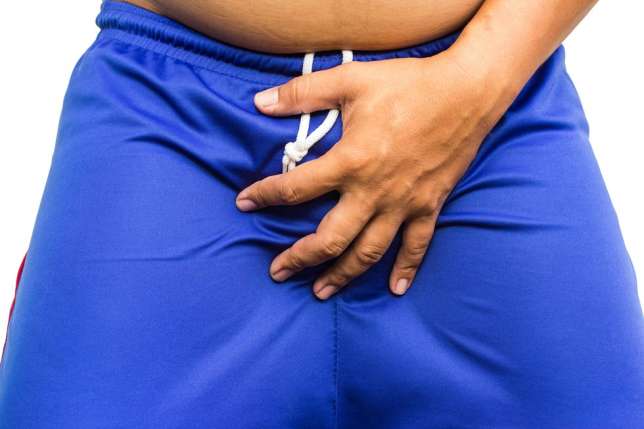3) Groin pull.
The cause: First things first – it could be a number of muscles in the groin region giving you trouble.
“There are hip, pelvic, and even some abdominal wall muscles or tendons that could factor into this injury. When a patient states he ‘pulled his groin’, I know that I have a bit of work to do in order to identify the root cause,” says Hogrefe.
Typically, however, these injuries are associated with side-to-side movement, often due to over-stretching of the muscles in this region.
How to treat it: “Compressing the area can be helpful in rehabilitation as well; compression shorts are often useful for this purpose,” says Hogrefe. (Try this pair from Under Armour for $53.99.) And rest is key, which usually takes between 3-6 weeks.
How to prevent a groin injury: Stick with dynamic stretching to warm up your legs. You should also grab a resistance band and work on strengthening thoseinner thigh and hip muscles.
Be sure to listen to your body. “If these muscles start to feel sore or fatigued, they may be overworked and teetering on the precipice of injury,” says Hogrefe.
When to see a doctor: If you notice a significant amount of bruising or a bulge, you should get it checked out: you might have a hernia.”Hernias can either result from or masquerade as groin pulls, and their management may differ from a more straightforward, isolated groin muscle/tendon injury,” says Hogrefe.
4) Rotator cuff tendonitis.
The cause: Your rotator cuff is made up of four muscles and tendons, which help to move your shoulder in all of its natural directions, explains Hogrefe.”Individuals engaged in throwing (e.g. baseball and softball) and racket sports (e.g. tennis and racquetball) are susceptible to this injury. High-intensity interval training workouts can lead to it as well,” he says.
How to treat it: Much like other muscle and tendon injuries, rotator cuff tendinitis can be managed by icing your shoulder and using anti-inflammatory medications (unless contraindicated). And it goes without saying that you should avoid any activities that affect the injured area for a few days.
How to prevent it: Once you’ve recovered, Hogrefe recommends using a resistance band to strengthen the individual rotator cuff muscles. And when you go back to lifting, it’s important to never lose sight of your hands. “Never let your hands go further behind head/back,” says King. “You will end up putting too much force on your rotator cuff.
When to see a doctor: “When you can no longer lift that double latte without significant pain, or any time that you experience weakness in the shoulder with activities of daily living, you should reach out for medical assistance,” says Hogrefe. These are indications that you may have torn one of the muscles that make up the rotator cuff.








Discussion about this post